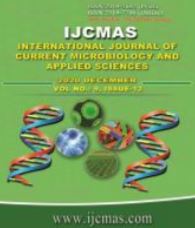


 National Academy of Agricultural Sciences (NAAS)
National Academy of Agricultural Sciences (NAAS)

|
PRINT ISSN : 2319-7692
Online ISSN : 2319-7706 Issues : 12 per year Publisher : Excellent Publishers Email : editorijcmas@gmail.com / submit@ijcmas.com Editor-in-chief: Dr.M.Prakash Index Copernicus ICV 2018: 95.39 NAAS RATING 2020: 5.38 |
Sugarcane is an important cash crop grown in tropical and sub-tropical areas in India as a source of raw material for sugar and bio-ethanol production. Diseases are the major constraints in sugarcane production causing severe economic losses. Various fungi, bacteria, viruses and phytoplasma causes diseases in sugarcane resulting in loss of cane yield and juice quality, thus reducing sugar recovery. Among fungal diseases red rot and smut are major diseases in North coastal districts of Andhra Pradesh inciting huge losses. Hence, the present study was undertaken to identify red rot and smut resistance in fourteen sugarcane genotypes under field conditions upon artificial inoculation. Plug and nodal methods of red rot inoculation was done in 20 standing canes of each variety for two subsequent years, 7 months after planting. Inoculated canes were assessed by longitudinal splitting of the canes 60 days after inoculation. Among fourteen genotypes evaluated for red rot resistance, five genotypes, 2015A 51, 2015A 59, 2015A 228, 2015A 230 and 2015A 233, were found resistant to red rot disease under plug method of inoculation and the rest reacted as either moderately resistant/ moderately susceptible/ susceptible/ highly susceptible. Two budded sets of fourteen sugarcane genotypes soaked in smut chlamydospore suspension were planted under field conditions and emergence of smutted whips was recorded from first whip appearance till harvest. Only one genotype, 2015A 222, has consistently shown moderately resistant reaction to smut disease during two years of assessment. The genotypes showing resistance could be used as resistant donors for breeding programme or released as resistant varieties upon agronomic evaluation.
 |
 |
 |
 |
 |